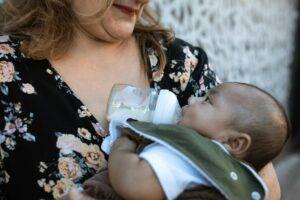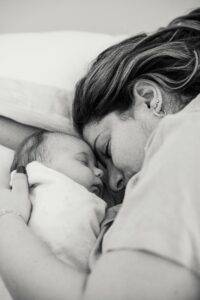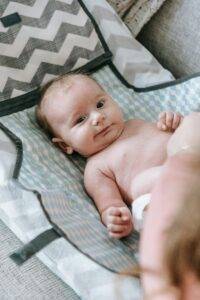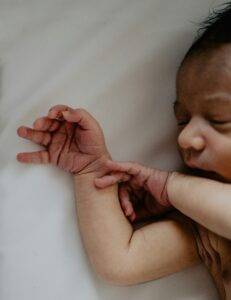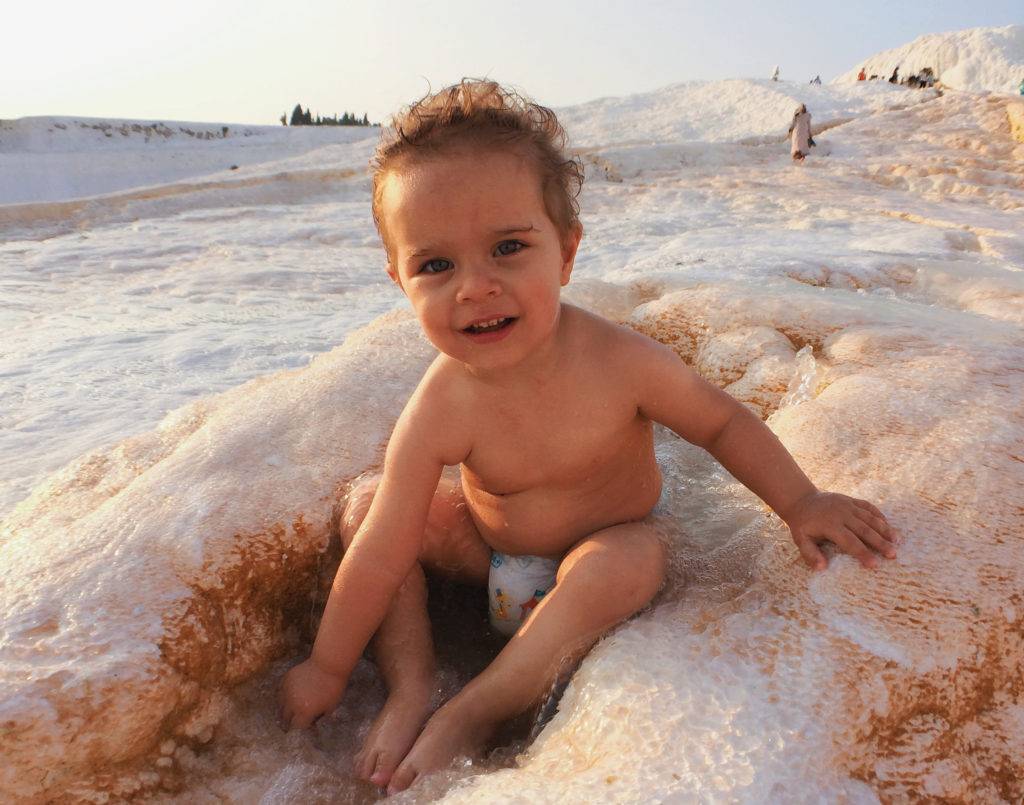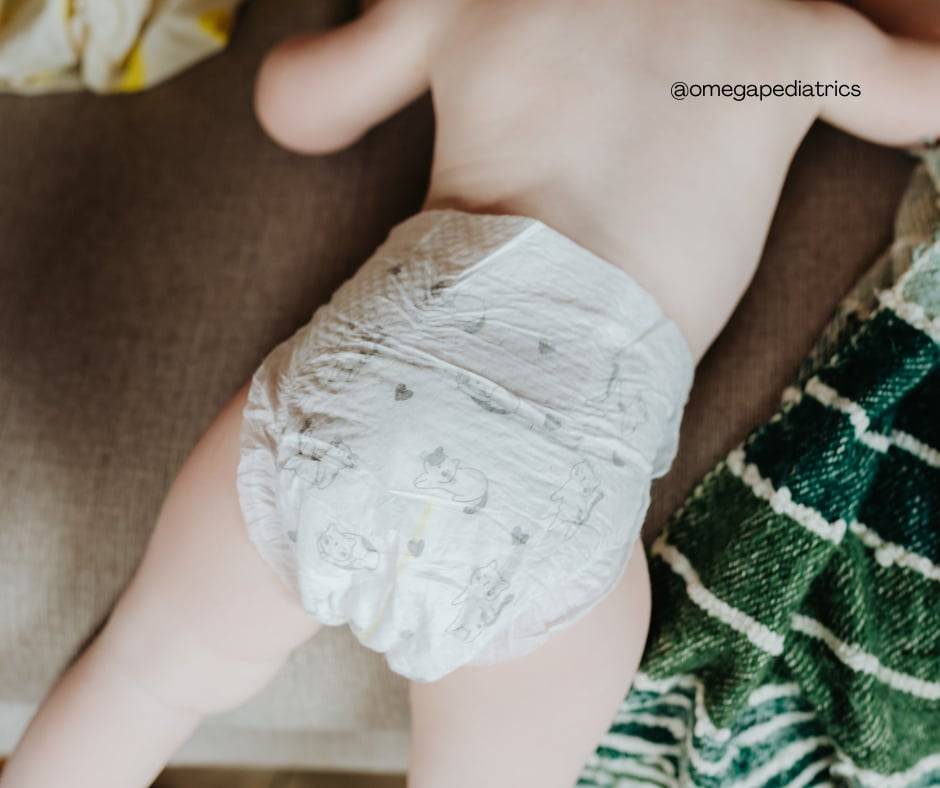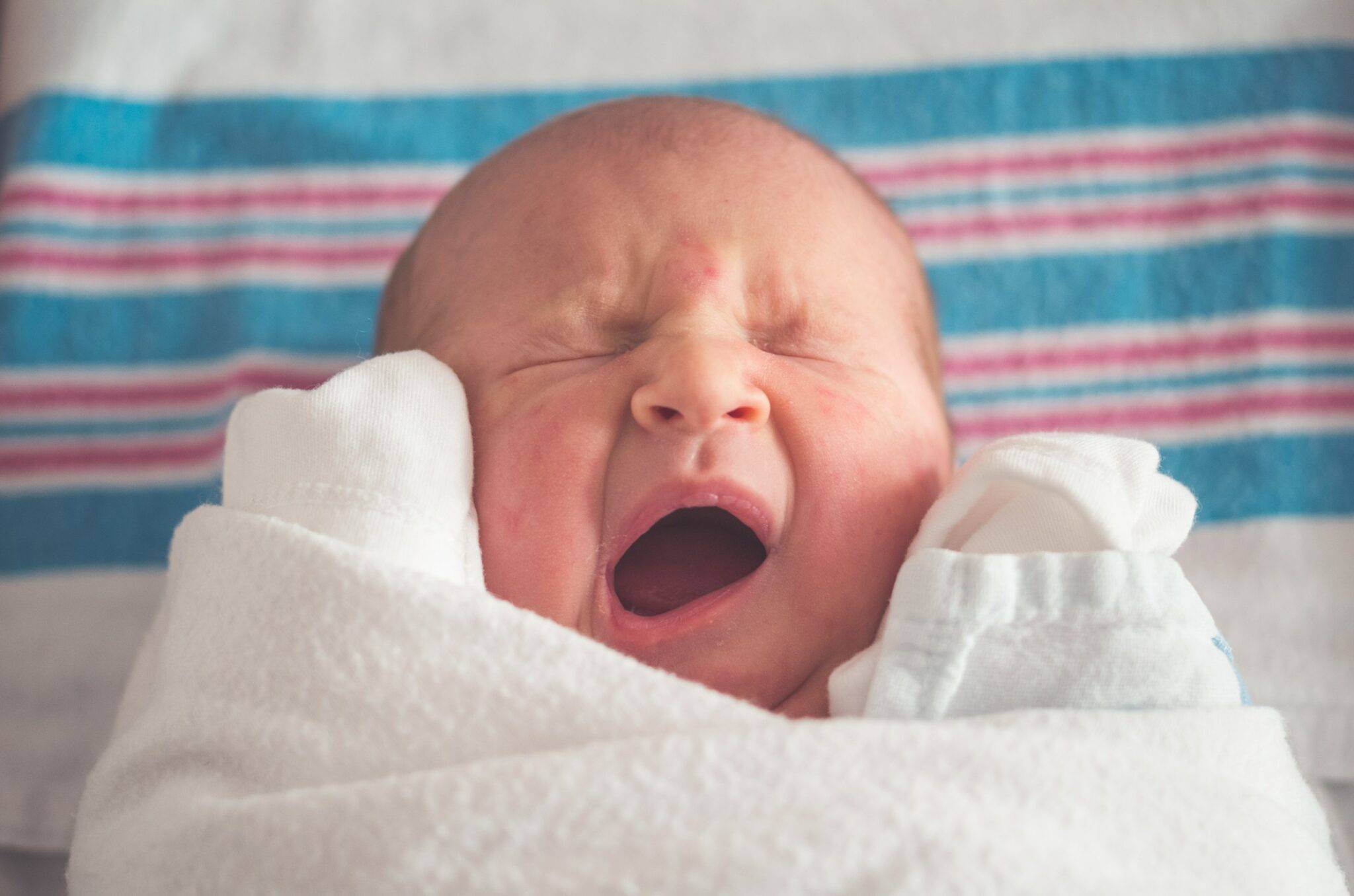Understanding how newborn babies see the world is a fascinating journey into the early stages of human development. Babies’ vision evolves rapidly, and knowing these key points helps parents and caregivers nurture their little ones effectively.
This post dives into ten captivating facts about how newborn babies see and perceive their surroundings.
How Newborn Babies See the World: Top 10 Fascinating Facts
Fact 1: Newborns Can Only See Close-Up
When babies are born, their vision is quite limited. They only see objects 8 to 12 inches away from their face. This distance is perfect for seeing their parent’s faces when held in their arms. It helps them start recognizing and bonding with their caregivers early on.
This initial range is ideal for breastfeeding and establishing a strong connection between the baby and the mother. As the weeks go by, babies gradually become more aware of their surroundings, but initially, their focus remains on the most crucial element: their caregiver’s face.
The proximity allows newborns to study facial features, making the close-up interactions even more meaningful for developing social and emotional connections.
Fact 2: High Contrast Colors Stand Out
Newborns are drawn to high-contrast colors like black and white. Their developing retinas aren’t fully capable of distinguishing colors, but they perceive contrasts well. This is why black-and-white toys and books are effective in engaging their attention. High-contrast patterns are visually stimulating and help to develop the baby’s optic nerve.
Parents use this knowledge to choose appropriate toys and books to capture and hold their baby’s attention, aiding visual development. Additionally, introducing patterns, such as stripes or checkerboards, further stimulates their vision and keeps them visually engaged.
Fact 3: Newborns Have Poor Depth Perception
Depth perception is the ability to judge how far away objects are. For newborns, this ability isn’t developed. They see the world in two dimensions rather than three. Depth perception starts around the age of five months, as their eyes begin to work together more effectively.
Babies rely heavily on other senses, such as touch and sound, to understand their environment in the first few months. As they grow, their vision improves, and they start reaching for objects, helping them learn about distances and spatial relationships.
Until then, objects appear to be at the same distance, which makes it challenging for them to grasp spatial relationships.
Fact 4: Newborns Prefer Faces
From birth, babies show a preference for faces over other objects. This natural inclination connects them with people around them, which is crucial for their social development. Babies recognize their mother’s face within the first few days of life.
This preference for faces is thought to be hardwired in the brain, ensuring that babies focus on the most important aspect of their environment: human interaction. This early focus on faces helps them learn to read emotions and understand social cues, forming the basis for future communication skills.
Fact 5: Newborns’ Vision is Blurry
At birth, a baby’s vision is blurry. The clarity of their sight improves significantly over the first few months. By 8 months old, they can see almost as well as an adult in clarity and focus. Initially, babies only make out shapes and outlines, but as their visual cortex matures, they begin to see more detail.
Parents help by providing a visually stimulating environment with varied colors and patterns to aid their baby’s visual development.
Fact 6: Eye Coordination Takes Time
Babies are not born with fully coordinated eye movements. This means their eyes might wander or cross from time to time. By 2 to 3 months old, their eye muscles have typically developed enough to allow them to track moving objects and maintain better focus.
Parents may notice their baby’s eyes moving independently initially, but this is normal and usually resolves independently as the baby’s eye muscles strengthen. Encouraging your baby to follow objects with their eyes helps improve coordination.
Fact 7: Newborns Can Detect Light
Even though newborns’ vision is not fully developed, they can detect light and movement from birth. They blink or turn their head in response to a bright light or sudden movement, indicating their awareness of their environment.
This sensitivity to light is an important survival mechanism, helping babies respond to potential environmental dangers. As their vision develops, they become more adept at distinguishing between different brightness intensities and tracking moving objects.
Fact 8: Color Vision Develops Gradually
Initially, babies see in shades of gray. By around 1 month, they start to see red, at 2 months, they can see a broader spectrum of colors. By 4 months old, most babies have developed color vision similar to that of adults.
This gradual development of color vision is due to the maturation of cone cells in the retina, which are responsible for detecting color. Parents support this development by introducing colorful objects and toys, which stimulate their baby’s visual system and enhance their color perception.
Fact 9: Babies Learn to Focus Over Time
Newborns’ eyes can’t focus on objects like adults do. They appear to be staring into the distance or have trouble tracking objects smoothly. By 2 to 3 months old, they begin to focus more effectively, and their ability to track objects improves significantly.
This improvement in focus is a crucial milestone, as it allows babies to explore their environment more thoroughly. Parents encourage this development by engaging their baby in activities that require visual tracking, such as moving a toy slowly from side to side.
Fact 10: Vision is Essential for Development
Good vision is crucial for a baby’s overall development. It aids in physical coordination, cognitive growth, and social interaction. Regular check-ups with a pediatrician ensure that a baby’s eyes are developing properly and identify any potential issues early on.
Vision problems affect your baby’s ability to learn and develop normally, so monitor their visual milestones closely. Early intervention addresses many vision issues effectively, ensuring your baby has the best possible start in life.
How to Support Your Baby’s Vision Development
Understanding how newborn babies see is just the beginning. Here are a few tips to support their visual development:
1. Engage with High-Contrast Toys
High-contrast toys and books are excellent for newborns. The stark color differences captivate their attention and encourage visual engagement. These toys can be as simple as black-and-white patterned cards or more complex like high-contrast mobiles.
The key is to provide visual stimuli that keep your baby engaged and help strengthen their developing visual system.
2. Encourage Face Time
Spend plenty of time face-to-face with your baby. This helps them recognize familiar faces and expressions, which is crucial for social development. Talk to your baby, smile, and make facial expressions to capture their attention.
This face-to-face interaction supports visual development and enhances bonding and emotional connection between you and your baby.
3. Read to Your Baby
Reading to your baby supports language development and provides valuable visual stimulation. Choose books with high-contrast images and simple illustrations that capture your baby’s attention.
Point to the pictures and describe them, encouraging your baby to follow along with their eyes. This activity fosters a love for reading and strengthens the visual connections in your baby’s brain.
4. Introduce Mirrors
Mirrors are fascinating and stimulating visual experiences for babies. Place an unbreakable mirror at your baby’s level and let them explore their reflection. This entertains them and helps them learn self-recognition and spatial awareness.
Mirrors can be incorporated into play mats or toys, providing a safe and engaging way for your baby to discover their movements and expressions.
5. Play Peek-a-Boo
Playing peek-a-boo with your baby can be fun and beneficial for their visual development. This simple game helps babies learn object permanence and improves their ability to track moving objects. Use your hands or a cloth to cover your face and then reveal it, encouraging your baby to follow your movements with their eyes.
This playful interaction also strengthens the bond between you and your baby.
6. Use Gentle Light Sources
Newborns are sensitive to bright light, so use gentle light sources to create a comfortable environment. Soft, diffused lighting is ideal for nurseries. Avoid direct exposure to bright lights or sunlight, which can overwhelm your baby’s developing eyes.
Use blackout curtains during naps to create a soothing, darkened environment that helps regulate your baby’s sleep patterns.
7. Offer Tummy Time
Tummy time is crucial for overall development, including visual skills. When babies spend time on their tummies, they strengthen their neck and shoulder muscles, which helps them lift their heads and improve their visual range.
Place interesting toys out of reach to motivate your baby to lift their head and look around. Supervised tummy time sessions should be part of your baby’s daily routine.
8. Encourage Reaching and Grasping
Encouraging your baby to reach for and grasp objects helps hand-eye coordination. Place toys within reach to motivate your baby to extend their arms and try to grab them. This activity strengthens their visual skills and enhances their motor development. Offer a variety of textures and shapes to keep your baby interested and engaged.
9. Provide a Safe and Stimulating Environment
Ensure your baby’s environment is visually stimulating but not overwhelming. Soft, colorful toys and safe spaces for exploration promote healthy visual development. Create a visually rich environment with varied shapes, colors, and patterns.
Rotate toys regularly to keep your baby interested and engaged. Safe exploration allows babies to learn about their environment through sight and touch.
10. Regular Pediatric Check-Ups
Keep up with regular pediatric appointments to monitor your baby’s vision. Early detection of any issues makes a difference in treatment and development outcomes.
Pediatricians perform simple tests to check your baby’s vision and refer you to a specialist if needed. Being proactive about your baby’s eye health prevents future problems and ensures they have the best possible visual development.
Understanding Visual Milestones
As your baby grows, there are several visual milestones to look forward to. Recognizing these milestones helps you track their visual development and ensures everything is progressing smoothly.
0 to 1 Month: Basic Light Detection
In the first month, babies are mainly responsive to light and movement. You might notice them turning their heads toward a bright window or blinking in response to sudden lights. Their eyes are also drawn to high-contrast patterns during this stage.
1 to 3 Months: Improved Focus and Tracking
During this period, babies focus on objects within their limited range of vision. They start to follow moving objects with their eyes and show interest in faces. You also notice them staring at their own hands as they learn to focus on nearby objects.
3 to 6 Months: Color Vision and Depth Perception
By around 3 months, babies develop color vision and distinguish between different shades. They also gain better control over their eye movements, making it easy to track moving objects. Depth perception emerges, helping them understand the spatial relationships of objects around them.
6 to 9 Months: Recognizing Familiar Faces and Objects
As babies approach 6 months, their visual acuity improves significantly. They can recognize familiar faces and objects from a distance and show excitement when they see something they like. This period also marks the beginning of hand-eye coordination, which is crucial for activities like reaching and grasping.
9 to 12 Months: Enhanced Visual Exploration
By the end of the first year, babies developed good visual acuity and coordination. They are more curious about their surroundings and engage in more complex visual processing, such as playing with stacking toys and exploring different textures.
Be Proactive to Support Your Baby’s Visual Growth
Newborns’ vision is a complex and rapidly evolving sense critical in their development. By understanding how newborn babies see the world and taking steps to support their visual growth, parents and caregivers ensure their little ones have the best start in life. Every baby is unique and their development will progress at its own pace.
For more information on newborn care and development, check out these helpful resources:
- 12 Reasons to Visit Your Pediatrician Once You Have a New Baby
- Why the MMR Vaccine is Essential for Your Child’s Health: Recommended Ages and Benefits Explained
Understanding and supporting your baby’s vision development can be a rewarding part of parenting. Enjoy these precious early moments and watch as your baby’s world comes into clear focus.

